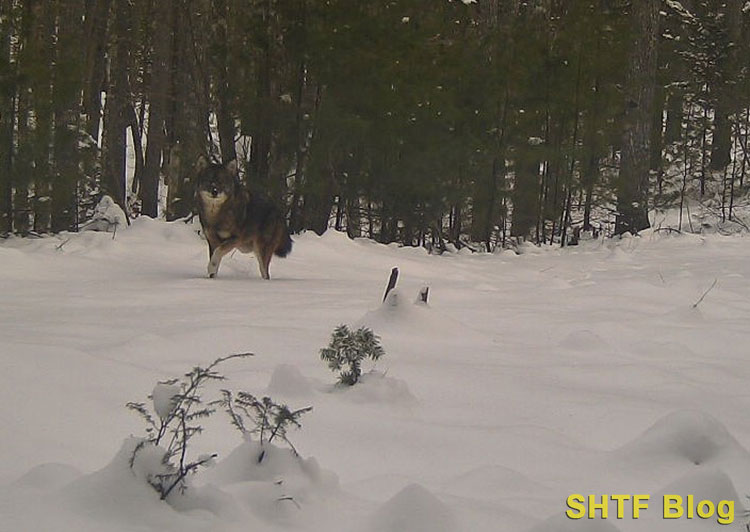
Coyotes can be more than just a hobby. It can be a solution to a problem. Here we’ll cover the hunting gear, guns, and tactics I’ve used to successfully find and dispatch coyotes.
Maine Coyotes
A local landowner phoned to ask about a solution to an escalating problem. Coyotes were howling up a storm too near the house for comfort, she was missing some guinea hens, and had concerns over the safety of her two young grandchildren. The kids became a greater worry after several recent coyote attacks on humans.
Two of these unprovoked incidents occurred on, of all places, Cape Cod. Makes me wonder how they ever got there in light of the Cape Cod Canal, a substantial salt water “river” that separates it from the mainland. Then again, coyotes have even been reported in the heart of New York City, within Central Park!
To say these canines are adaptable is an understatement.
Just about every region of the continental United States now has a coyote population of some sort. But there are coyotes – and then there are coyotes…
Several years ago, one of my sons had an opportunity to do some coyote hunting in Texas. He was surprised by their difference to our Northern New England dogs. He said the Lone Star strain was considerably smaller, and much more responsive to predator calling tactics.
Further north, in the open spaces of the Great Plains, calls are employed to lure in much larger-looking coyotes. Based on the outdoor TV footage I’ve viewed, those from the Dakotas have a closer resemblance to our Maine coyotes – which are actually gray wolf hybrids.
Most bagged by my small circle of hunters weigh around 38 pounds, however, some can break the 50-pound mark. Probably due to their wolf genes, they’re also downright wily, making them harder to sucker with a call.
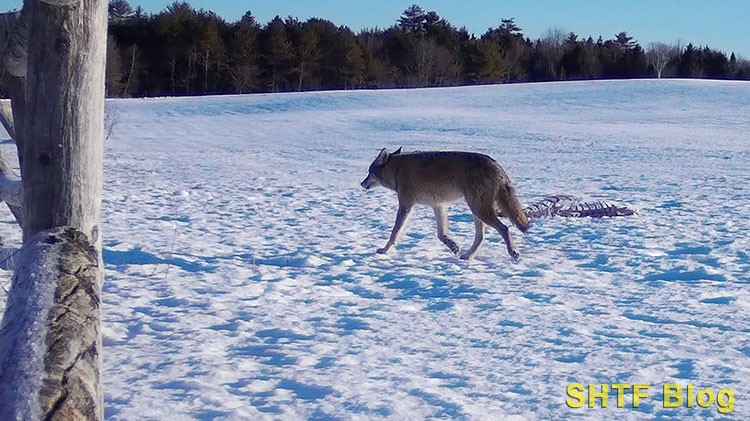
Not that it can’t be done though. A few locals claim success through meticulous attention to every small detail, including noise and scent control. Contrary to western tactics, they also don’t call in open spaces.
Instead, successful hunters move into the woods. During daylight, our ultra-cautious coyotes will normally avoid open terrain, so clearings are used as barriers to cut off downwind approaches.
Gear
In Maine, the possession of a mouth call is mandatory during our special night coyote season.
Predator Calls
I always carry a “dying rabbit” mouth call to comply with our laws, but it sees little use. For that matter, neither does my e-call; a well-used FoxPro unit. That said, I’d hate to be without the e-call, which was purchased primarily for use on coyotes. On a whim, I added extra sounds including some deer, turkey, and crow selections.
- Horn howler, 1 open reed howler, 1 double reed Coyote diaphragm, 1 latex mouthpiece howler
- Raised Ridge on the howler tone board to help to prevent freezing
Good thing, too! It has accounted for dozens of turkeys and hundreds of crows – but only a couple coyotes. That’s because our blind-and-bait strategy involves hunts from the same locations, where repeated calling would quickly educate coyotes. All of my experience involves FoxPro units, however there are others that work similarly via remote control and a pre-loaded menu of sounds.
For what it’s worth, I believe an e-call has further value for survival purposes, due to the many different species it can attract.
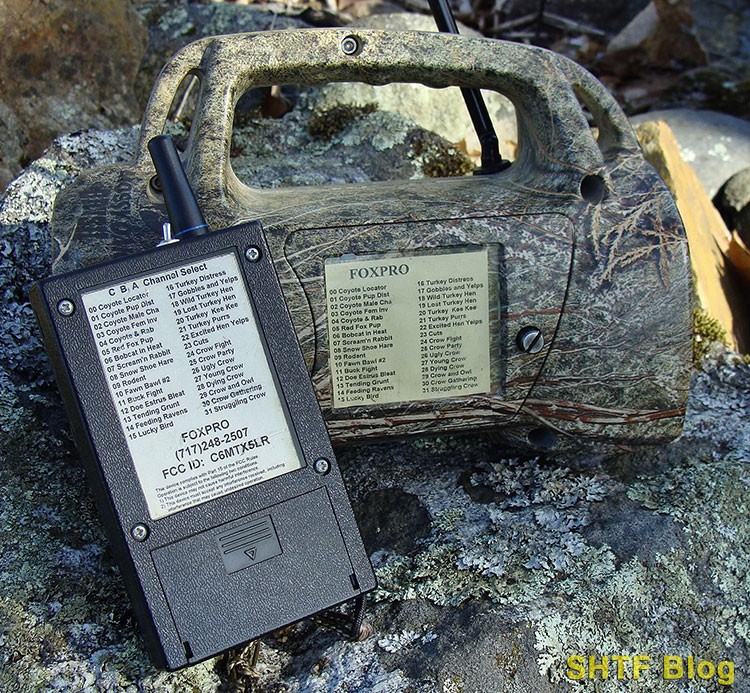
Or, go the KISS route and buy a mouth call. Either way, watch as many coyote hunting videos as possible to get a handle on techniques. Better yet, partner with an experienced caller. Les Johnson from Predator Quest has this strategy figured out!
Decoys
A battery-powered motion decoy is a great addition to an e-call because an approaching predator will zero in on the commotion instead of the hunter – assuming it doesn’t get a whiff of your scent.
- Control this decoy with your Primos electronic caller
- Stop & Go Eye catching movement
Many calls now have accessory jacks for operation of a decoy, but you can use most independently with a mouth call. Another option is a freestanding coyote decoy.
Lights
Specialized predator lights are available, including units that will mount to firearms. Mostly, they’re used in conjunction with calls, for detection and the final shot. Some believe a red filter is less likely to spook coyotes. Others say it doesn’t matter.
We don’t use any lights, simply because our cagy coyotes will quickly associate one with danger from our stationary blinds. Instead, we need a passive system – like night vision.
Optics
This category includes the various handheld and gun-mounted technologies, from basic binoculars and scopes, through specialized night vision devices and thermal instruments. Prime daylight time for coyotes is sunset or dawn, easily covered with a set of decent binoculars and a suitable scope.
But, of course, activity doesn’t cease when darkness falls. Actually, it often increases. Our northern winter nights are long, so many more opportunities are possible with NV or thermal technologies. This assumes they can function in the cold. Battery life is a concern when the mercury plummets.
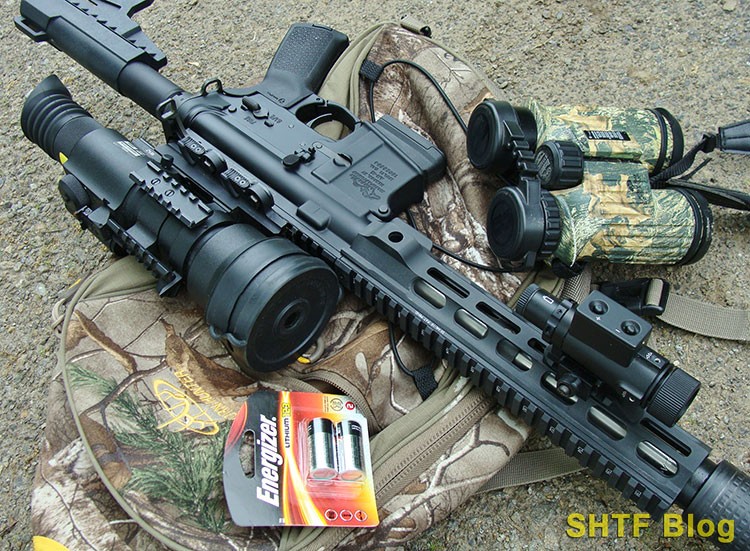
Binoculars
Believe it or not, even with access to higher-end NV instruments, a decent set of binoculars is our mainstay night detection device. Batteries are a non-issue and, unlike NVs, binoculars won’t affect a person’s night vision – an advantage during non-stop surveillance.
My circa 2009 Bushnell 10×42 Legends may not be high-end, but they perform surprisingly well. However, without moonlight or snow, NV becomes essential.
- 10 x 42Millimeter. Length-5.5 inch
- Legend L Series
They do the job for us because we normally hunt on snow. Even on a moonless night, a coyote in the open will appear as a dark apparition, buying time for a switch to an NV-scoped rifle. Binoculars will also work through windows, which are needed to ward off single-digit temps (while containing scent and noise).
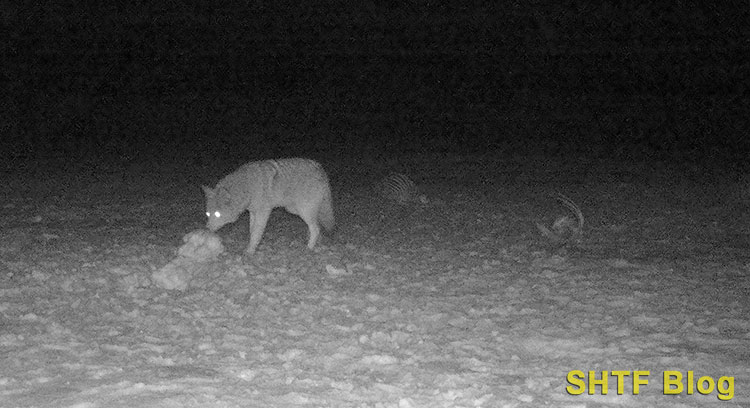
Night Vision Devices
Traditional tube-based NV technologies intensify available ambient light – which means they need some light to function. Higher-end Gen-3 instruments perform exceedingly well. Nevertheless, the handheld Gen-3 PVS-14 monocular usually stay behind, in favor of binoculars.
Our AR-15s have more affordable Gen-2+ night-scopes. Because the NV scope is normally only switched on for a shot, its single #123 Lithium battery will last all winter. Our dedicated NV scopes are all discontinued ATN 4X tridents, which work well on snow during all moon phases.
On bare ground, without moonlight, not so much. The solution is an IR illuminator; essentially, a small flashlight that throws a beam only visible via NV.
But, during daylight, we’re out of luck. The latest clip-on NV units fix this problem by coupling with a standard scope. Or, go digital. Today, a number of less expensive night scopes have appeared, that work similarly to digital cameras – meaning they’ll also function during daylight.
They suck through more juice and require an IR unit, but digital units are much more affordable. Optics Planet sells several, branded as Day/Night Rifle Scopes, for less than $700.
Thermal Devices
Thermal devices don’t require any light source. Instead, they register heat emissions which are converted into imagery. The good news is, costs have come down – by a lot. I haven’t made the transition yet, partly because they won’t work through glazing.
But, those who call coyotes after dark would certainly benefit from a thermal device. Some lower-end units produce less distinct images, but nowadays, even many mid-priced models do pretty well. Food for thought: A quality image is important for positive identification of targets.
Cost will be higher than a digital scope.
Guns
In the open terrain of the upper Midwest, .22/250 or .243 bolt-action rifles offer plenty of reach and power to anchor large coyotes. Nationally, many coyote hunters use AR-15s, which can mount everything from scopes through lights. Their threaded muzzles also permit installation of effective flash-hiders.
Those we’ve used: YHM Phantoms, Smith Enterprise’s Vortex, and the Surefires, will almost completely eliminate flash. At night, without the right type, expect only one good shot followed by a period of blindness. The same brilliant flash will temporarily shut off many NV scopes which are “gated” to prevent overexposure.
During daytime hunts bolt-actions work well, but I’ve been blinded several times in low light – just briefly enough to require a daytime search, the following morning.
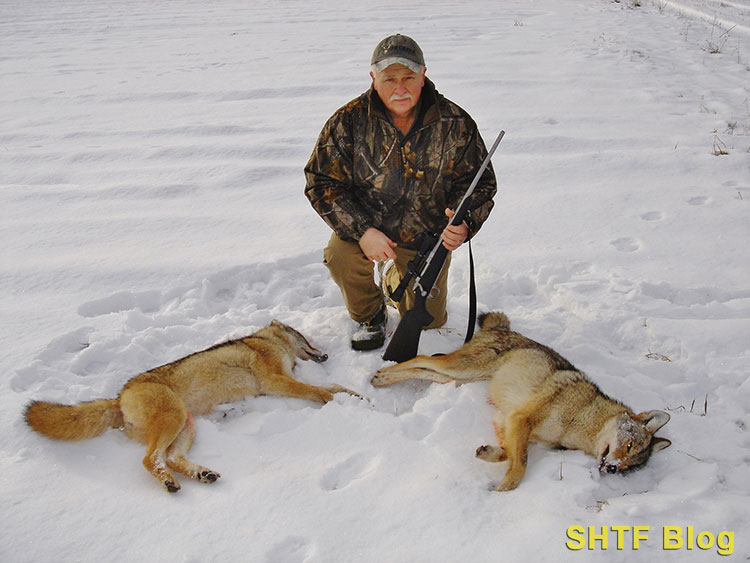
Still, in my area, a number of hunters have switched to larger calibers after losing coyotes to seemingly good hits from .223 Remington loads. Part of this is attributable to their large size, and part involves our terrain, consisting of thick woods with dense fir thickets. Even on snow, we’ve lost our share using lighter .223 varmint bullets that failed to exit large coyotes.
Their thick winter coats soak up blood during dashes to thick cover and, complicating matters, the area surrounding an active bait pile will be peppered with a maze of coyote tracks, including some from females in heat. Unraveling the mystery can be challenging enough in daylight. At night, it only deepens. Fortunately, those days are long gone.
We’ve had good luck with Federal 55-grain Ballistic tips, and Federal 60-grain Nosler Partitions. Any well-hit coyote won’t go far, and most will just pile up. Either load will exit; bad for hide hunters, but good for tracking purposes.
Another option is the .300 Blackout conversion. Hornady’s 110 V-MAX will hammer big coyotes, and shoots flat enough to cover 200 yards. Their 190-grain Subsonic SUB-X load is designed for suppressors, and will cycle most AR-15s. Its trajectory is loopy, but useful out to around 100 yards, which covers most nighttime action. Expect exits from either of these loads.
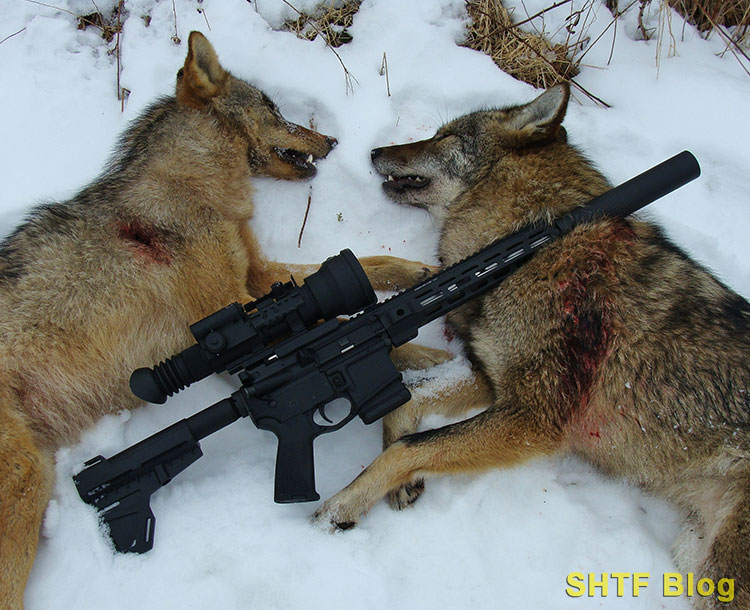
Smaller calibers see some coyote use, but I’ll skip a .17 HMR in favor of something with more clout. The above .223 loads are the more humane threshold. Yes, you could kill a coyote with well-placed .22 LR bullet (even a deer), but the target would need to be its brain.
Shotguns are another option, good for low-light calling, or anywhere the action could be close and fast. Our hound hunters often use them for the latter reason; usually 12 gauges stoked with 3” shells (or even 3 ½”) magnums.
Hornady’s Heavy Magnum Coyote nickel-plated lead BB load is popular and effective out to around 50 yards. Heavy-Shot’s more expensive, non-toxic Dead Coyote shells can supposedly stretch the range to 70 yards!
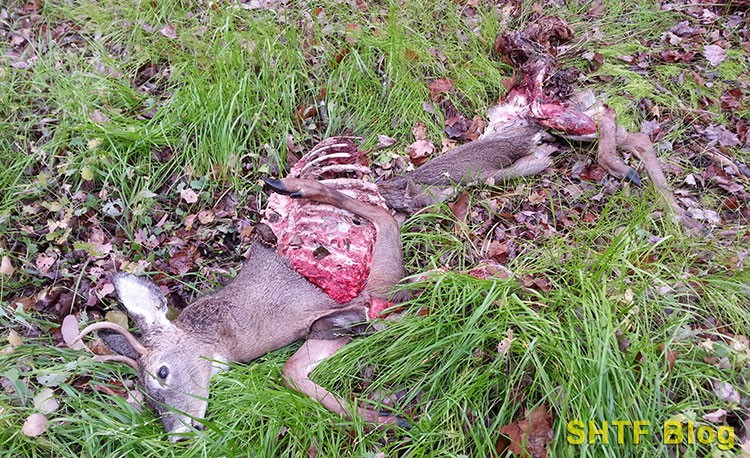
Scopes
A rifle scope is still darned useful, even for some nocturnal hunts. I’ve shot coyotes a good 45 minutes after sunset using 1” tubed Leupold VX-3 4.5-14X40s with non-illuminated, Varmint Hunter reticles. Closer to midnight, on snow, I’ve had great luck with a 30mm Vortex Strike Eagle 1-6 during the brighter lunar phases.
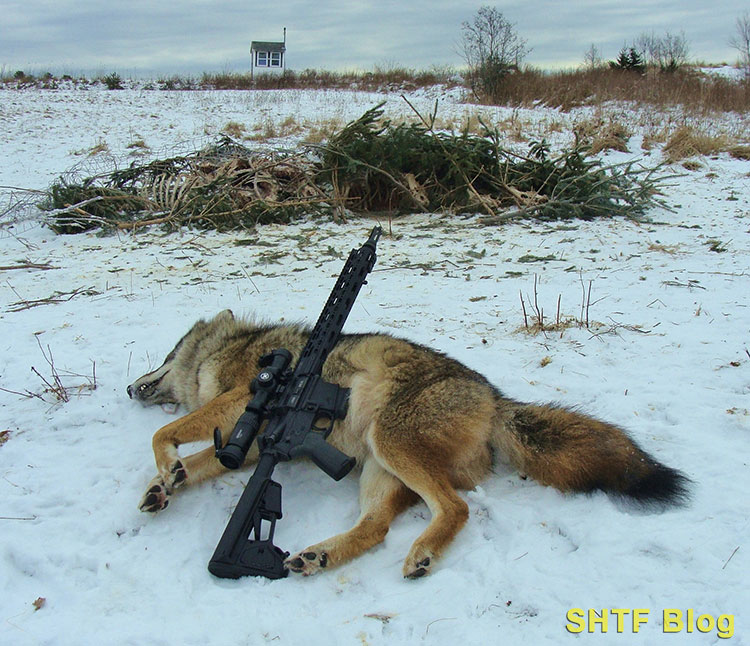
Its illuminated reticle shows up nicely on the silhouette of a coyote, eliminating the need for an NV scope.
Tip: If possible, try scheduling night hunts to coincide with brighter lunar phases – the several days each month nearest to the full moon.
Tactics
A buddy from Florida related the details of his single coyote hunting venture. He parked his Cadillac, uncased his AR-15, walked 100 yards, plunked a roasting chicken in the trail, and broke out his new mouth call.
Fail.
However, his call could’ve worked with a better strategy.
Nationwide, more coyotes are probably taken with predator calls than by any other method. This tactic can also be the simplest and most affordable.
Calling Methods
Many serious coyote hunters do well with mouth-blown calls, but nowadays, electronic remote-controlled calls are extremely popular. Their various coyote vocalizations and rodent squeals can eliminate much of the learning curve. An e-call can also be isolated from its user, and some will power motion-decoys, designed to mimic small prey.
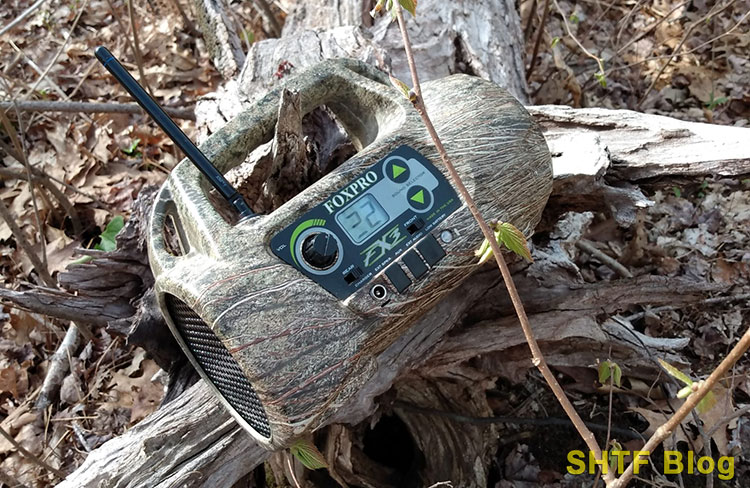
This feature can help seal the deal – as long as a hunter is mindful of his scent plume. In some states (like Texas) where predator hunting is legal from vehicles, pickup trucks are decked out with shooting platforms and spot lights for action after dark.
In my heavily forested region, more coyotes are probably called in than are ever seen. Most remain undetected due to stealthy downwind maneuvers that culminate in a nose full of human scent. Chalk up another “educated” coyote, one much less likely to fall for casual strategies.
Fortunately, scouting, proper calling techniques, and effective utilization of terrain can increase odds of success, all for a relatively minor investment. E-calls are nice, but a mouth call will work. You can set up on a smaller property or call throughout your area, unencumbered by extra gear. However, one wild card can be the weather.
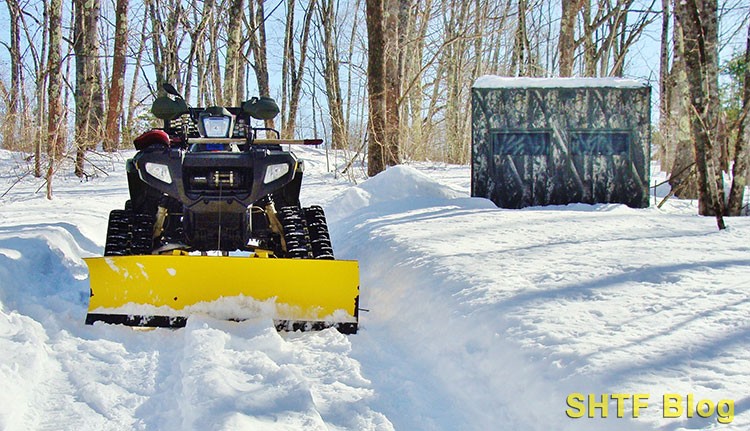
Throughout my area, coyote hunting is pretty much a winter sport. We even have a special coyote night season that starts during mid-December, right after our deer season ends. The frigid temperatures produce prime pelts, but rapidly accumulating snow can blanket the woods, making for tough going.
Many of us have snowshoes, snowmobiles, or ATVs with tracks, but coyotes aren’t stupid. Sound carries a long way, especially during still and cold conditions, so a lengthy dismounted hike is still necessary for success. For this reason, a couple other strategies have evolved – both of which involve bait.
Dogs and Bait
Several crews in my area use this strategy to great effect. Bait piles are established to attract hungry coyotes throughout the lean winter months. Once fresh tracks begin to radiate from a bait, tracking dogs with radio-locating collars are set loose. The hunters spread out near clearings or snowmobile trails to cover likely intercept points. Success depends on fast shooting at coyotes in high gear.
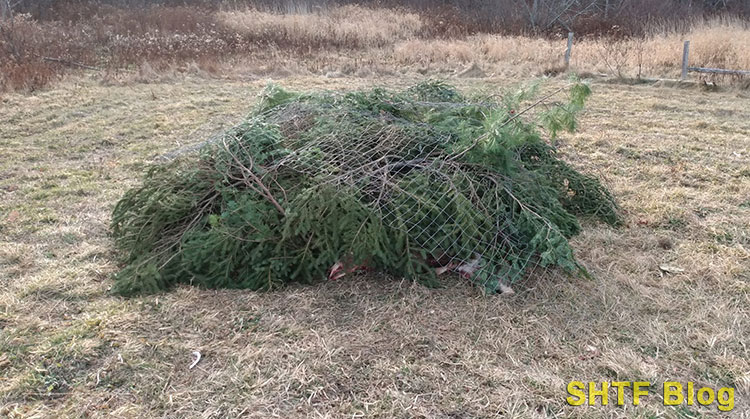
By winter’s end each crew will have bagged several dozen rugged coyotes that are no longer chasing deer. One downside is, of course, the need for a bunch of trained dogs, costly e-collars, and a set of strong legs! Bait sites also require permission from landowners, and plenty of adjacent real estate to accommodate the lengthy pursuits.
Blinds and Bait
This variation involves stationary blinds instead of dogs. It’s the go-to method for those in my coyote circle, although it’s the least proactive. The typical bait pile consists of a pickup bed full of deer carcasses and scraps, compliments of our local chop shop. Each pile is sited in a secluded but accessible spot like the corner of a field surrounded by thick cover.
The mound of deer scraps is covered by a thick layer of fir boughs; sometimes topped by wire mesh to dissuade pilfering crows, ravens, and eagles. A small weathertight blind, located around 100 yards from the bait, is situated to take advantage of moonlight. The blinds are sturdy snow-resistant structures warmed by propane heaters – a necessity given January’s single-digit temperatures.
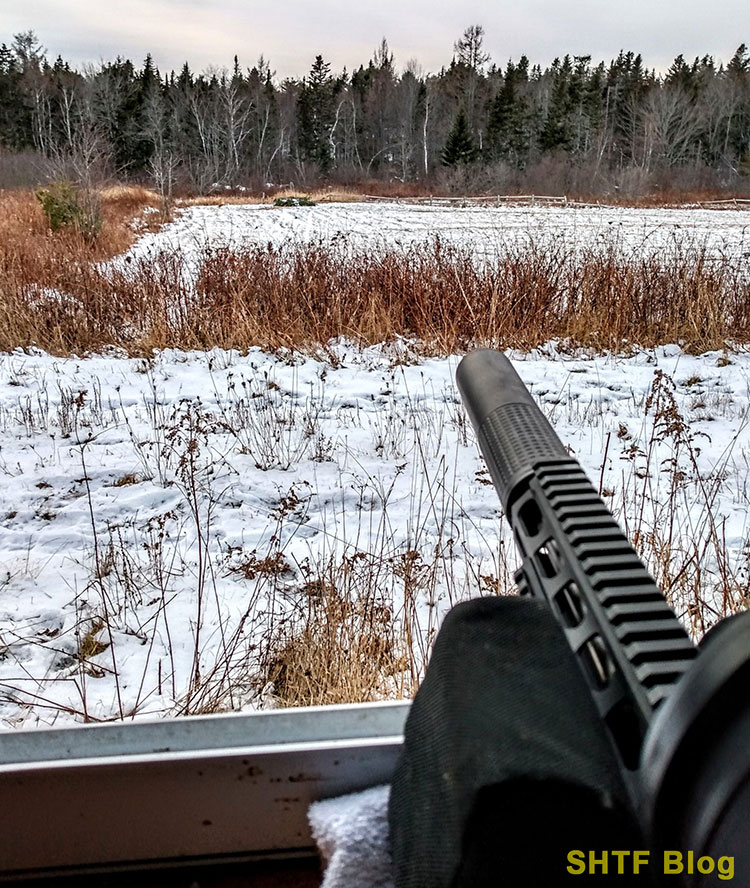
Most of the action occurs after dark, often with no rhyme or reason, making this tactic a waiting game. Although landowner permission is necessary, much less real estate is required. Once a bait becomes active it will draw coyotes from considerable distances. The most productive sites are those under constant observation from camps or house windows.
Some folks rig alarms and keep rifles on standby in their bedrooms for “hot” action involving brass. I could do the same, but I’d rather attract deer than coyotes – while avoiding the cost of a divorce.
Coyote Hunting Conclusion
How smart are coyotes? Well, we take pains not to leave a scent trail that connects our bait piles with our blinds. Anything out of the ordinary will cause a smart coyote to vamoose, often never to return. For this reason, you really can’t spend your way to success.
That’s probably a good thing given the total cost of the above items. Speaking of which, laws vary greatly from one state to the next. Bait, lights, e-calls, and night hunting aren’t legal everywhere, so check before proceeding. For what it’s worth, a deer rifle and a simple mouth call will work.
The only other requirements are a grasp of the calling basics, and a population of unpressured coyotes.
Meanwhile, what about the nice landowner? I don’t have coyote dogs, and even if I did, the current August temperatures are too hot to run them, or set out bait. And, the last thing she’ll want is a coyote-attracting smorgasbord. As for calling, it’s a longshot without better intel, so she’s out of luck from me.
However, as it turns out, her husband is a deer hunter. If a coyote does appear in their unpopulated back forty, a potshot from his rifle may connect, or worse case, inspire coyote relocation to a safer neighborhood. I’d also ditch the Guinea hens, or any other free-ranging domestic delicacies.




1 comment
WOW ! !